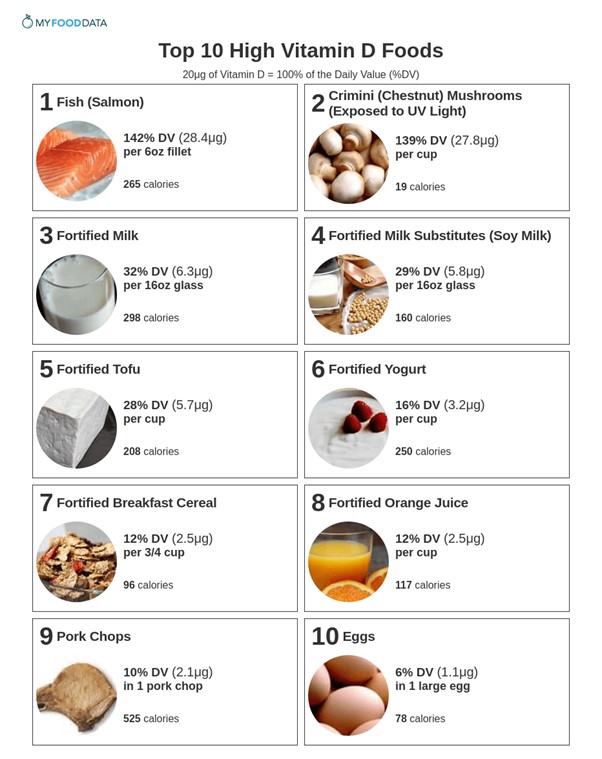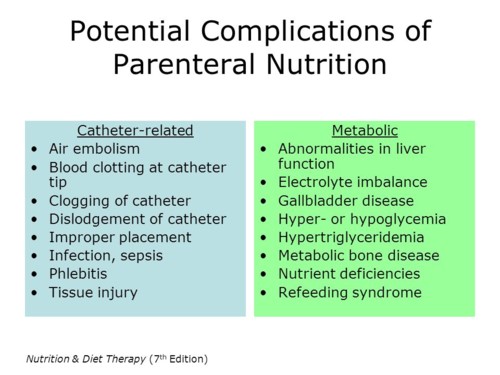In conducting community health teaching, the nurse plans to describe foods that will help prevent rickets. What food product should the nurse recommend as the best dietary source for preventing rickets?
Bananas.
Apple juice.
Oranges.
Fortified milk.
The Correct Answer is D
Choice A
Bananas are incorrect. While bananas contain some nutrients, they are not significant sources of vitamin D, calcium, or phosphate, which are key nutrients for preventing rickets.
Choice B
Apple juice is incorrect. Apple juice is not a significant source of vitamin D, calcium, or phosphate. It may contain some vitamins and minerals, but it is not a primary food source for preventing rickets.
Choice C
Oranges are incorrect. Like bananas and apple juice, oranges are not significant sources of vitamin D, calcium, or phosphate. While they contain vitamin C, which is important for overall health, they are not the best dietary source for preventing rickets.
Choice D
Fortified milk is correct. Rickets is a condition primarily caused by a deficiency of vitamin D, calcium, or phosphate. Vitamin D is crucial for the proper absorption of calcium and phosphorus in the body, which are essential for bone health and development. Fortified milk is an excellent dietary source for preventing rickets because it is often enriched with vitamin D and calcium, both of which are important for bone mineralization and growth.

Nursing Test Bank
Naxlex Comprehensive Predictor Exams
Related Questions
Correct Answer is C
Explanation
Choice A
Opened package of hot dogs is not correct. Hot dogs are processed and often contain preservatives that help extend their shelf life. However, it's still important to follow proper storage guidelines to ensure their safety.
Choice B
Packaged of uncooked lamb chops is not correct. Uncooked meats are generally safe if stored properly. The main concern arises when cooking and handling them, as raw meats can potentially cross-contaminate other foods if proper sanitation measures are not followed.
Choice C
Opened package of deli sliced meat is correct. Among the options provided, an opened package of deli sliced meats (option C) is most likely to pose a threat of food poisoning after being stored in a refrigerator at 40°F (4.4°C) or below for more than two days.
Deli sliced meats are considered a high-risk food for bacterial growth and foodborne illnesses. When meats are sliced and exposed to air, they have a larger surface area, making them more susceptible to bacterial contamination. While the refrigerator temperature of 40°F (4.4°C) helps slow down bacterial growth, it doesn't completely prevent it, especially if the food has been stored for an extended period of time.
Choice D
Ground-up hamburger raw meat is not correct. Similar to uncooked lamb chops, raw ground meat is generally safe when stored properly and handled with care. However, ground meats do have a larger surface area that can allow bacteria to grow more easily, which is why safe cooking practices are important.
Correct Answer is C
Explanation
Choice A
Urinary ketones are not most important. Monitoring urinary ketones can provide information about the utilization of glucose and fat as energy sources. However, it is not the primary lab value to monitor in TPN administration.
Choice B
Serum protein is not most important. Monitoring serum protein levels is important to assess nutritional status, but it might not be as immediate a concern as serum osmolarity.
Choice C
Serum osmolarity is the most important. When caring for a client receiving total parenteral nutrition (TPN), monitoring serum osmolarity is most important. TPN is a highly concentrated solution containing various nutrients, and it is infused directly into the bloodstream. Serum osmolarity reflects the concentration of particles (such as electrolytes, glucose, and other solutes) in the blood. Monitoring serum osmolarity is crucial to prevent complications related to fluid and electrolyte imbalances that can arise from the administration of TPN.
Choice D
Capillary glucose is not the most important. Monitoring capillary glucose levels is important, especially in clients receiving TPN with added glucose. Hyperglycaemia is a potential complication of TPN. While glucose monitoring is important, it is secondary to monitoring serum osmolarity, which encompasses a broader range of solute concentrations.

Whether you are a student looking to ace your exams or a practicing nurse seeking to enhance your expertise , our nursing education contents will empower you with the confidence and competence to make a difference in the lives of patients and become a respected leader in the healthcare field.
Visit Naxlex, invest in your future and unlock endless possibilities with our unparalleled nursing education contents today
Report Wrong Answer on the Current Question
Do you disagree with the answer? If yes, what is your expected answer? Explain.
Kindly be descriptive with the issue you are facing.
